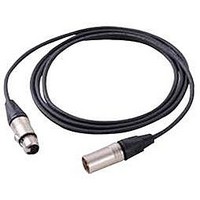U8903A-103 AGILENT TECHNOLOGIES, U8903A-103 Datasheet - Page 6

U8903A-103
Manufacturer Part Number
U8903A-103
Description
Cable Assembly
Manufacturer
AGILENT TECHNOLOGIES
Datasheet
1.U8903A-908.pdf
(16 pages)
Specifications of U8903A-103
Lead Length
2m
Insulator Color
Black
Jacket Color
Black
Cable Length
2m
Assembly Cable Type
Coaxial
Connector Type B
Female XLR
Cable Color
Black
Connector Type A
Male XLR
Rohs Compliant
NA
For Use With
U8903A Series Audio Analyzer
Lead Free Status / RoHS Status
na
Advance Measurement Testing (continued)
SINAD and THD+N
measurement
U8903A gives you the flexibility to
lock down the generator frequency
under the Frequency Lock features.
With this feature, users can set
the generator frequency in order to
tell the location of the fundamental
signal. In this case, users have the
flexibility to lock the external source’s
fundamental frequency to make
SINAD and THD+N measurements
more accurately because the mea-
surements are based on the actual
source fundamental signal rather
than the detected fundamental signal.
Sometimes the other order signal
and noise is stronger than the actual
source fundamental signal which will
impact the measurement reading.
Transmitter and receiver testing
The U8903A includes several
measurement features that simplify
the testing of the transceivers used
in devices such as car radios,
telephones, mobile radios, broadcast
radios, FM tuners, and television.
The U8903A can handle all of these
applications when combined with
a modulating signal generator for
receiver testing and a signal analyzer
for transmitter testing (see diagrams
on next page).
True-RMS detection
To accurately characterize signals
with high noise content, true-RMS
detection is required. The U8903A
employs true-RMS detection for all
signals with crest factor less than
three. In addition, quasi-peak detec-
tion (CCIR 468-4) and peak-to-peak
detection are also available through
softkey selections.
Built-in filters
The U8903A includes a variety of
essential filters for transmitter and
receiver testing. Its CCITT, CCIR, and
C-message weighting filters meet
international standards for receiver
testing. For transmitter testing, the
seven-pole 400 Hz high-pass filter
provides better than 40 dB rejection
of signals up to 250 Hz, letting you
measure transmitter audio
distortion to 1% without disabling
squelch signals.
For even greater flexibility, you can
apply custom filters created using
applications such as MATLAB and
Agilent VEE. Once you’ve uploaded
a filter via the U8903A’s USB port, it
can be applied to your measurements
through a softkey selection. In all, you
can apply up to three filters at a time.
6
Reference/relative measurements
This features allows users to perform
measurement on level, frequency,
and ratio based on the selected
impedance value, frequency, or ratio
reference value. This simplifies
manual data measurement and data
collection because the calculations
are automatically generated inside
the equipment in real time. This fea-
ture provides users with the flexibility
to decided which signal sources to
perform Signal-to-Noise (SNR) mea-
surement without solely depending
on the U8903A generator source.
SINAD measurements
Commonly used to test FM receivers,
SINAD measurements must be made
repeatedly when checking receiver
sensitivity or adjacent-channel
selectivity. To smooth out the typi-
cally noisy signals that are present
during receiver testing, the analyzer’s
SINAD mode employs extra filtering
circuits. These are optimized for high
speed and excellent repeatability:
the U8903A provides distortion and
SINAD measurements with an acqui-
sition time of less than 1.5 seconds
and a measurement rate of greater
than two reading per second after
locking.
Signal-to-noise ratio
To characterize signal quality in
AM receivers, the U8903A can
automatically make the necessary
signal-to-noise ratio measurements. It
does this by monitoring the incoming
AC signal level while turning its low-
distortion source on and off.
The U8903A provides the average
point features which allows users
to set the number of readings used
for averaging. The display value will
be the averaged value based on
the number of points selected. This
allows users to analyze noisy signals
using an increased number of average
points for greater accuracy.










